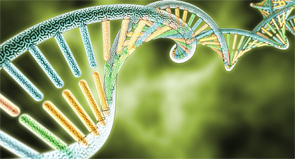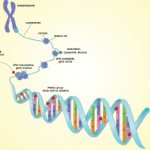
Yang Nan/shutterstock.com
SAN FRANCISCO—As researchers have delved into the genetics behind osteoarthritis (OA), genes that appear to be players in the disease have emerged, but there have also been curveballs thrown, with expectations not always matching up to the genetic realities, an expert said at the 2015 ACR/ARHP Annual Meeting.
The genetic risk of acquiring OA is real: Estimates range from 2- to 8-fold if a family member has OA, compared with a 5- to 10-fold risk for RA and a 3-fold risk for type 2 diabetes.
Ana Valdes, MA, PhD, associate professor and reader in musculoskeletal genetics at the University of Nottingham, said that it was generally thought that genes would line up neatly with extracellular matrix components, signaling pathways, joint inflammation and other aspects of the disease. But the number of genes that has actually been found to be associated with OA has, so far, fallen short of painting such a clear picture.
Genes Associated with Disease
An assessment of 199 OA candidate genes published in 2014 found just two that were significantly linked with the disease—COL11A1 and VEGF, Dr. Valdes said.
Other studies have linked more genes with OA—such as GDF5 in an Asian hip OA cohort and SMAD3 in a Caucasian knee OA cohort.1
Genome-wide association studies have expanded the search for genetic links, but come with a high bar to clear: P values have to be less than 5 x 10(-8), requiring either extremely large sample sizes or big genetic effects, Dr. Valdes said.
These studies have yielded several hits, but some have come with twists: the DVWA gene—a clear hit in its Asian, knee OA population and thought to be associated with the tubulin-binding in cartilage—has not been reproducible in studies on Caucasian patients, even in very well-powered studies, Dr. Valdes said.
“It just seems that genetic contribution to genetic arthritis is different in the two ethnic groups,” she said.
Two newer genes that have been recently found in hip OA—DOT1L, involved in Wnt signaling, and IGFBP3, involved in cartilage breakdown—seem to fit in well with what is known about the biology of the disease, Dr. Valdes said.
Epigenetic studies have also been taking off, she said. A study of 25 OA patients and 20 controls, and involving 27,000 DNA methylation probes, found different methylation patterns between the two groups, and a genome-wide expression analysis found a cluster of OA patients with a distinct pattern of gene expression characterized by an increased inflammatory response.2
